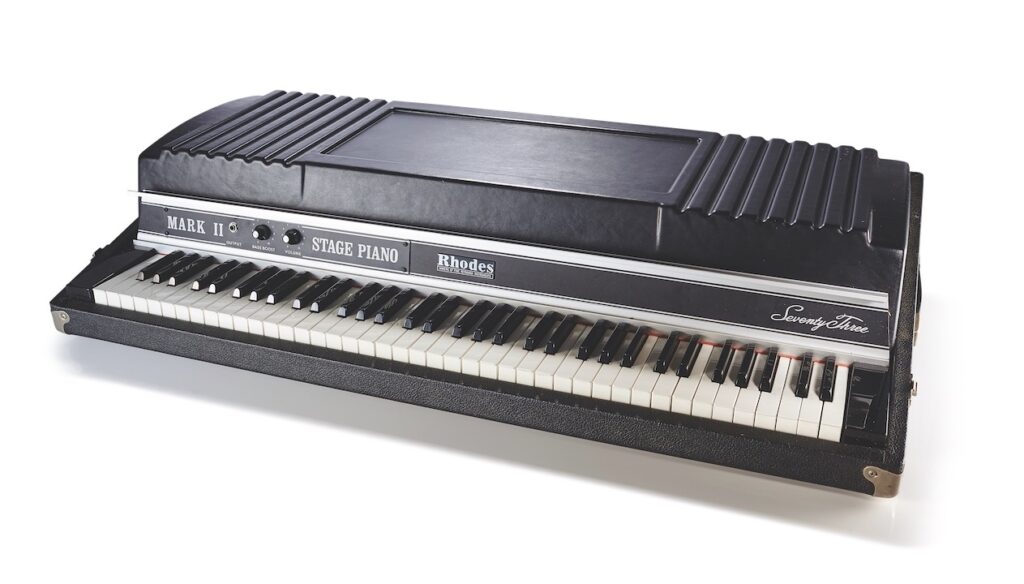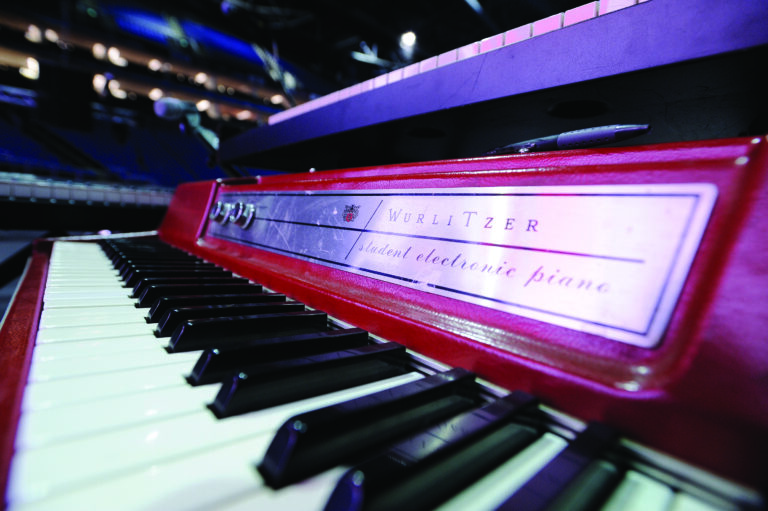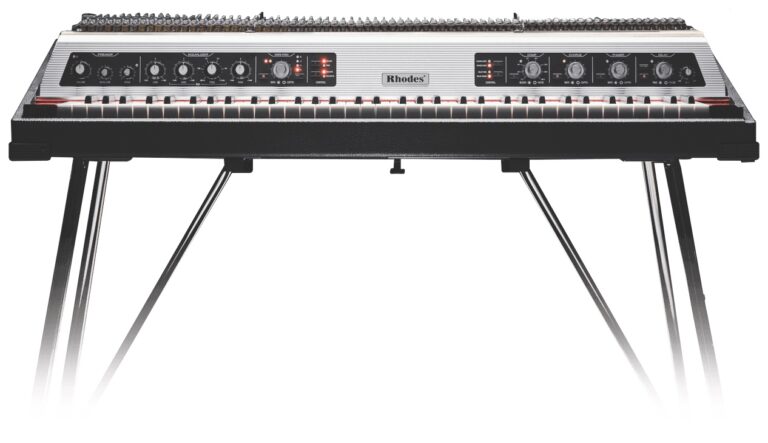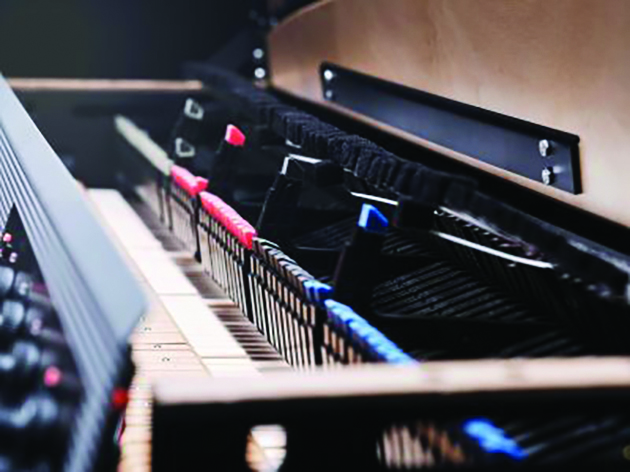Are piano ‘friends’ electric? Here’s why a non-acoustic could be just what you’re looking for…
Even prior to the advent of rock ‘n’ roll, piano companies realised that there was potential to create a piano with a degree of electrification. One advantage being that amplifying a piano’s strings could open up a host of possibilities…
Several companies, including Baldwin and Kawaii, explored this concept, but by far the most successful example came from Yamaha. The CP series, and most notably the CP-80 and its smaller sibling the CP-70, became regular stalwarts in both studio and live environments.
The resultant sound is highly unique and identifiable, sounding much like an acoustic piano, but with a recognisable mid-range quality that really cuts through a mix. Even though the CP-80 was first produced in 1978, it remains a sought-after classic.
Through the late ’70s and ’80s, bands such as Earth Wind & Fire used them endlessly, with a huge resurgence during the ’00s, when the band Keane used a CP as a central component to their sound, on just about all of their earlier recordings. Even now, electro-disco pioneer and producer Lindstrøm is a heavy CP-80 user, as are the band Snarky Puppy, who made extensive use of their own CP-80 on their latest Grammy award-winning recording, Empire Central.
Just because an instrument might look like a piano, doesn’t mean that it has to sound like a piano, and there are a clutch of instruments which come under the guise of electro-mechanical instruments that leave the piano sound behind. Arguably, the most famous is the instrument known as the Rhodes Piano (formerly Fender Rhodes).
Named after its inventor Harold Rhodes, the full-sized Rhodes piano first came into being in the mid-’70s, following production of its smaller bass-range relation, the piano bass. The Rhodes Stage piano became synonymous with jazz and soul, and the likes of Miles Davis and Stevie Wonder.
Unlike Yamaha’s CP series, the Rhodes is a different beast. Once a key is struck, a hammer is triggered, much like a conventional piano. But the felt hammers were replaced by neoprene or rubber tips, which would strike a metal component known as a tine, instead of strings, and cause the tine to vibrate.
The tip of the tine would ‘wobble’ across a pickup, much like on an electric guitar, creating a signal to be amplified. The most common Rhodes use 73 notes, with one tine and pickup for every note. The resultant sound could be mellow or harsh, with basic control of tone, though it also became common to use with effects pedals, particularly phasers.
You’ll find Rhodes sounds among the presets of many hardware and software synths, often with tremolo effects, which scatters the signal across the stereo field
You’ll find Rhodes sounds among the presets of many hardware and software synths, often with tremolo effects, which scatters the signal across the stereo field. This was a sound associated with the Suitcase version of the Rhodes, which adopted a fixed tremolo effect onboard. Meanwhile, the US company ‘Dyno-my-Piano’, built a solid following but adapting original Rhodes pianos, and offering a brighter sound, with greater presence. This ‘Dyno-Rhodes’ sound has also become a prominent preset among many hard and softsynths.
If the Rhodes wins first prize for popularity, the Wurlitzer piano comes a close second. Known as the ‘Wurli’ or ‘Wurly’, this electro-mechanical instrument also employs a piano action, but instead of strings or tines, the hammer strikes a reed. The resultant tone is softer than other instruments, with an almost vibraphone-like texture.
Wurlitzer produced several version of their electric piano, the most common being the EP-140 and EP-200. Like the Rhodes, it was common to use effects alongside the Wurly, with some classic examples across the history of popular culture. While the Wurly adopts association with many rock artists, ranging from Queen, Marvin Gaye and The Doors, to Beck and Paul Weller, all the way to modern production.
Given the wealth of options available to the end user in the acoustic piano stakes, why might you choose to lean into the distinct sound of an electric? All of these electro-mechanical instrument offer very different tonal characteristics; the Yamaha CP-80 hints at a conventional piano, but with a contemporary twist.
The Rhodes and Wurly, on the other hand, adopt a sound which is mid-way between a piano and a guitar. Their mellow sound, with exceptionally flexible sonic characteristics, means that either could be at home in several scenarios. However, these instruments are particularly useful for filling out a harmony within your mix, and it’s one that’s quite unlike any other instrument.
Rhodes Mk8
However, the Rhodes received a new lease of life in 2021, when a Leeds, UK startup company took on the Rhodes Music brand and started hand-crafting Rhodes pianos again. The Rhodes Mk8, as it’s known, is a much improved model of the early Mk1 and 2 models, which are still highly sought after. Available in the classic 73-note format, the Mk8 offers a vastly improved, responsive action, with better electronics and a sharp, classic look. The Rhodes is firmly back on the block.





